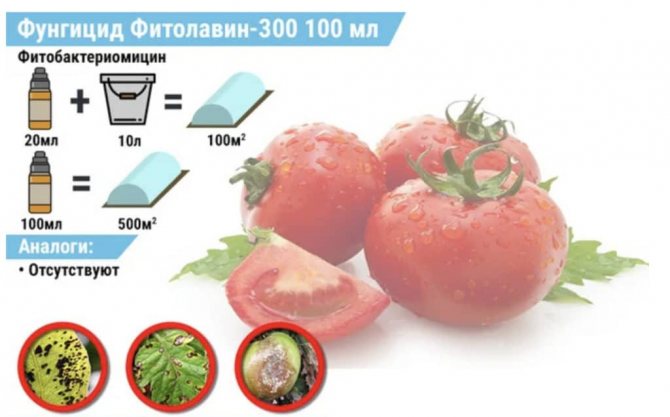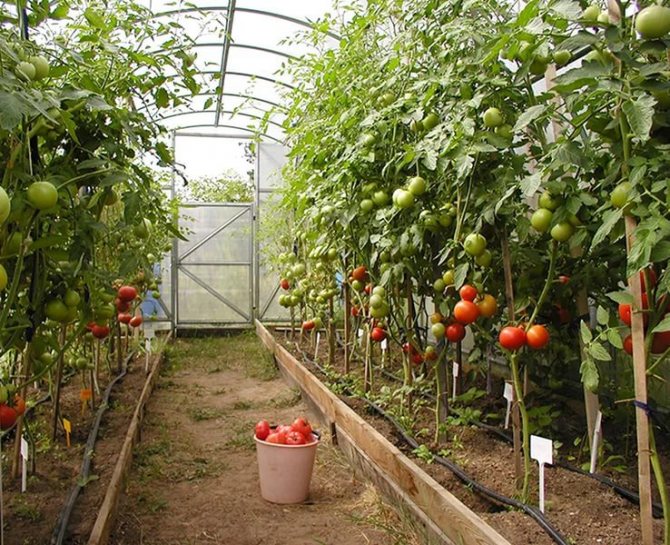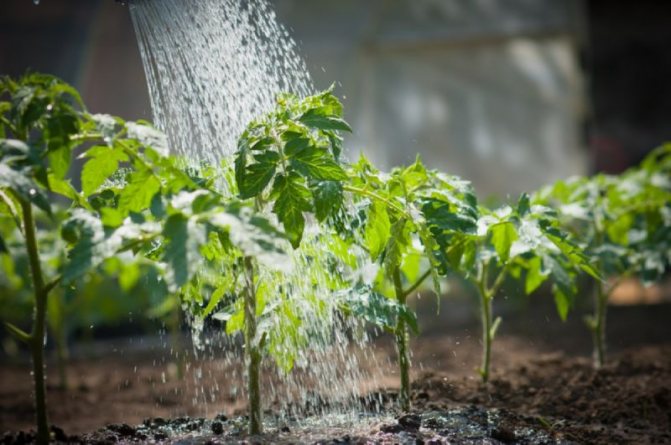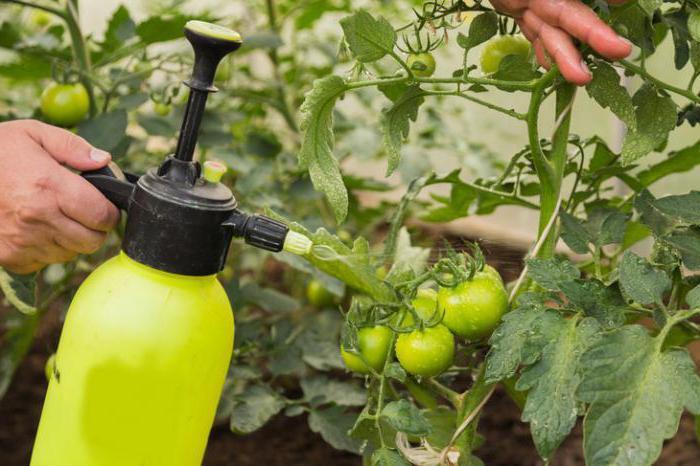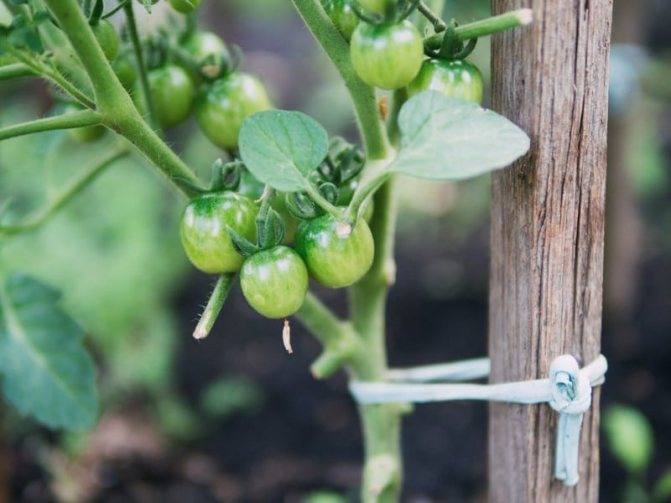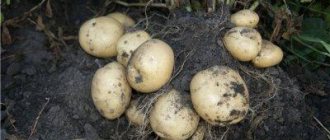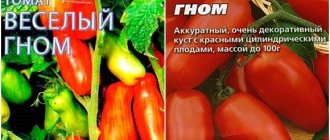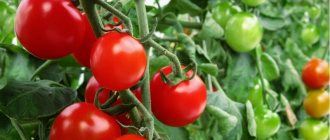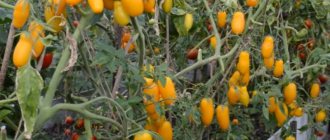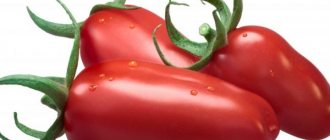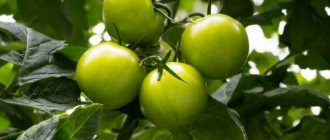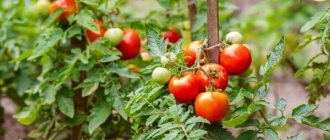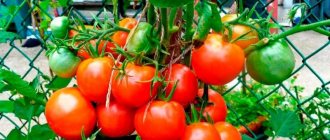Vegetable growing »Tomatoes
0
933
Article rating
As soon as the spring season comes, many people worry that they do not know which varieties of tomatoes they need to plant this year, because they want to get not only the early fruits of tomatoes, but also to feel their rich and pleasant taste. It is for these purposes that it is recommended to use Nastenka tomato. This hybrid is characterized not only by a pleasant taste and aroma, but also has excellent yield indicators. This is what attracts the public's eyes.

Description of tomato Nastenka
Characteristics and description of the variety
The tomato variety Nastenka was obtained in 2008 by domestic breeders. Its originators are agro and farmer S. N. Kondakov. The variety was entered into the state register of the Russian Federation only in 2012. This is a hybrid of medium ripening periods, the harvest from which can be harvested 95-110 days from germination.
This variety has medium-branchy bushes of a determinant type, growing up to 0.7 m. Their small leaves are colored green, and the fruits at maturity have a red-pink color and a heart-shaped or oval shape. Up to 6–8 tomatoes can be set on each cluster, with an average weight of 150–200 g. They have excellent taste characteristics, fleshy sweetish pulp with about 6 seed chambers.


These fruits are suitable for fresh consumption and for any preservation. The yield is 1.5 kg per bush. With the right approach, up to 10–12 kg of fruit can be harvested from 1 m². Has an extended fruiting period. It can be grown in open beds and in greenhouses.
Description of tomatoes Nastenka
Tomato variety Nastenka, according to the structure of the bush, belongs to the group of determinant plants that do not require pinching the top. After laying a certain number of flower clusters, the stem stops growing. Tomato bushes Nastenka are low - 50-70 cm, stocky, well leafy. The stem is powerful, but given the large number of fruits and their weight, it is better to tie the plants to a support.
The number of side shoots is small, their growth is limited. Tomato leaves are bright green, small, slightly corrugated. The inflorescences of the variety are simple, 4-5 flowers each. The first cluster of fruits is formed after 5-6 leaves, and the next - at intervals of 1-2 leaves.
Description of fruits
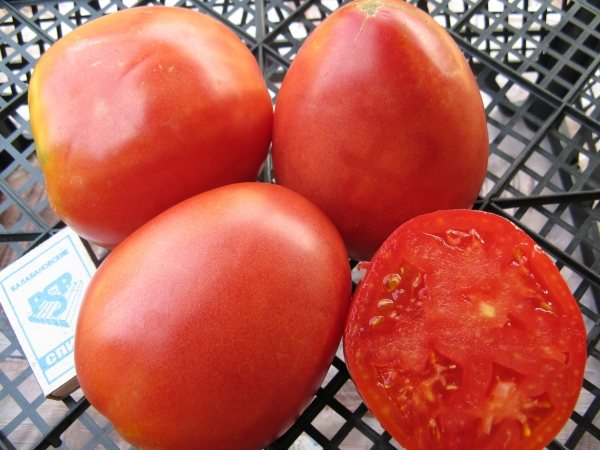

The fruits of the tomato variety Nastenka are rounded, noticeably elongated, but not heart-shaped. Despite the fact that the tomatoes of this variety are of an early ripening period, the fruits on the lower inflorescences are large, weighing up to 250 g. On the upper fruit clusters, the average weight of tomatoes is 120-150 g. Ripe in natural conditions, the fruits of the Nastenka variety have a pleasant pink color, tender , juicy texture, sweet taste and delicate aroma. Outdoors, with insufficient sunny days, the taste can become sour. The surface of Nastenka's tomatoes has weak ribs, 4-6 seed chambers filled with juice and medium-sized seeds. The skin of the fruit is thin, but quite dense, it tolerates transportation well.
Advantages and disadvantages
- The variety can attract gardeners with the following advantages:
- unpretentiousness;
- can be grown in all regions and in different conditions (greenhouse, open ground);
- crop stability;
- long-term fruiting;
- great fruit taste;
- versatility of use;
- does not require shaping and supports.
Did you know? In pink varieties of tomatoes, the concentration of organic acids is lower, as a result of which they have a sweetish taste. This is important for people with high acidity and some other gastrointestinal problems.
- The disadvantages of the Nastenka variety include the following:
- requires a high agricultural background;
- the inability to use their own seed.
Characteristics of a semi-determinant plant
The word determinant means limited in growth. Those who grew the variety Nastenka know that as soon as a flower ovary appears at the end of the stem, it stops growing. Therefore, the strongest shoot, located below the central shoot, begins to develop further.


You can find out a semi-determinant tomato by:
- seedlings - their cotyledonous knee straightens and has a length of no more than one or three centimeters;
- the formation of the first flower brush - it appears after the seventh to eighth true leaf;
- the bookmark of flower brushes in adult tomatoes - two to three leaves between the brushes;
- restriction of growth after the formation of ten or twelve hands.
Since Nastena belongs to the standard types of vegetable plants, the thickened central stem does not need a garter. It holds itself perfectly straight, without bending under the weight of the fruit.
Pros, cons of the determinant
Positive aspects can be distinguished from the characteristics and description of the Nastenka variety:
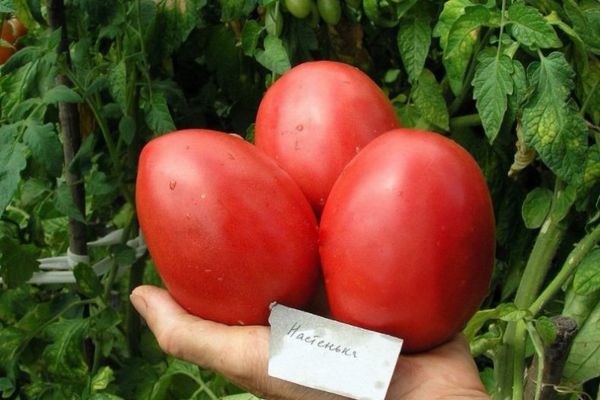

- Due to the frequency with which flower clusters appear, tomatoes ripen faster.
- The number of fruits is more on one bush, hence the yield is higher.
- Pink fruits ripen amicably, as the brushes are tied at the same time.
See also
Characteristics and description of the tomato variety KhlynovskyRead
The minuses of the semi-determinant variety include:
- predisposition to disease;
- compulsory work on the introduction of mineral fertilizers;
- pinching the plant due to the congestion of the bush with stems and fruits.
All the disadvantages of the variety are associated with the requirements for tomato care.
Optimal growing times
Seeds for seedlings are sown at the end of February or in March. With earlier crops, artificial lighting becomes necessary. When sowing, it should be borne in mind that seedlings of tomatoes of varieties with an average ripening period are planted in beds at the age of 55-60 days, and the seeds germinate about a week (under optimal conditions). If a pick is planned, then add a few more days for the adaptation of the plant after transplanting into separate containers.


Tomato seedlings are planted in the beds when the soil has warmed up to + 12 ° C and the threat of cold weather has passed. In the middle zone of the Russian Federation, this weather usually occurs in early June. The seedlings are planted in the greenhouse 2 weeks earlier. That is, if you need to plant seedlings on June 1 at the age of 55 days, then the seeds are sown around the 20th of March, and the harvest of Nastenka tomatoes will begin to be harvested in early to mid-July.
In the south of the country, seeds can be sown directly into the ground when it warms up to + 11 ° C. Such weather in the Kuban, for example, is established from mid-April. If necessary, the sowing site and seedlings should be covered with foil overnight.
Did you know? Heat treatment does not compromise the usefulness of tomatoes in any way. The concentration of lycopene after boiling juice for sauce or ketchup only increases. Most of this useful antioxidant is in tomato paste - up to 1500 mg / kg.
Storage rules for tomatoes
Tomatoes can retain their freshness and taste for a long time if you know the storage rules.
- Collect tomatoes in dry weather to prevent decay during storage.
- Pluck and store with the stalk.
- Place the fruits in a strong container, lay soft material on the bottom.
- Store in a dry, ventilated room at 20-22 degrees Celsius, humidity not more than 80%.


Growing features
In the northern regions and the middle zone of the Russian Federation, in order to obtain an earlier harvest, the Nastenka tomato variety is grown only by seedlings.
Growing seedlings
If the package of purchased seeds does not indicate that they have been processed, then you will need to prepare the seed for planting yourself. First of all, it is recommended to disinfect the seeds, for example, by soaking them for 20 minutes in a 1% solution of potassium permanganate.
Then they must be rinsed well. After this procedure, the seeds can already be sown directly into the prepared soil. To check their germination, it is recommended to germinate them before planting. To do this, they are wrapped in a damp cloth for a couple of days. Then the hatched seeds are used for planting.
Also learn how to grow other determinant tomato varieties:
Tanks and soil are prepared in advance. Ready-made substrate for seedlings can be purchased at the store, or you can make it yourself by mixing a fertile layer of soil from the garden and humus 1 to 1. Homemade soil must be disinfected - calcined in the oven, pour boiling water or potassium permanganate.
First, the seeds are sown in a seedling container, 5–8 cm deep. They make grooves 1 cm deep and 3-4 cm spacing. The seeds are placed 2 cm apart and sprinkled with soil. The sowing is moistened, covered with foil and placed in a warm place (+ 25 ... + 30 ° C). Before the emergence of shoots, the container is ventilated every day and the state of humidity is monitored.
The container with the sprouts that have appeared is transferred to a place with good illumination and the first week is kept at an air temperature of + 13 ... + 16 ° C so that the seedlings do not stretch out. Then the temperature indicators of the room with seedlings can be increased to + 18 ... + 22 ° С. Nighttime temperatures should be a few degrees lower than daytime temperatures.


After the appearance of the second true leaf, the plants dive into separate containers. They should already have two real sheets. Plants begin to feed within a couple of weeks after germination and then continue to fertilize every 10 days. For top dressing at home, it is best to use a ready-made complex fertilizer (Agricola or Master).
Watering is carried out as needed, when the upper part of the soil is somewhat dry. For this, settled heated water is used. A couple of weeks before planting, the seedlings begin to harden on the balcony, gradually accustoming them to outdoor conditions.
Preparing a site for planting seedlings
It is better to prepare the beds for planting tomatoes in the fall. For them, they choose a place well-lit by the sun, where tomatoes and other nightshades have not grown before. It is best to plant after legumes, cabbage or beets. It is necessary to remove weeds, and dig up the soil with the introduction of organic matter (manure, droppings).
Important! Heavy clay soils are improved by introducing sand, sawdust, humus, and high-moor peat in the autumn period. The sandy soil is weighted with organic fertilizers and this is done in the spring so that the introduced components are not washed out by melt and rain water.
In the greenhouse, it is necessary to disinfect and change the soil. If the beds were not prepared in the fall, then you can dig in the spring along with the introduction of rotted manure or compost. For each m² it is recommended to add a tablespoon of potassium sulfate and double superphosphate and 0.5 liters of ash.
Seedling planting technology
You can plant seedlings in a permanent place after 2 months from the date of planting with seeds. The plant should already have 6-8 leaves during this period. It is necessary to plant seedlings in open ground in May, when the air warms up above + 12 ° C. It is better to plant in the morning when the weather is cloudy.


Seedlings are planted with an interval between plants of 0.4 m in a checkerboard pattern. The row spacing should be 0.5 m. For planting, holes are made 20 cm deep and the plants are planted by transshipment (with an earthen clod). Then watered abundantly, pouring about 1 liter of water under each root.When planting in open ground, the plants should be covered from the cold at night with agrofilm.
Farmer reviews about the variety
Nastenka has mostly positive feedback from gardeners.
Galina Irtischeva, Sochi: “Every year I plant Nastenka at my dacha. Ideal for lazy gardeners. It does not need to be tied up and shaped. Doesn't get sick. The harvest is always early and abundant. The taste of tomatoes is pleasant. "
Sergey Belousov, Moscow: “I am growing Nastenka in the open field. An easy-to-grow variety that is guaranteed to yield even in cold summers. I collect about 2 buckets of tomatoes from three bushes. Tomatoes have a classic tomato flavor and are medium in size. "
Tomato care
To get a good harvest, proper care should be provided, which consists of watering, fertilizing, loosening the soil, weeding, pest and disease control.
Fertilizers and watering
Tomato Nastenka needs regular watering. It should be done about 1-2 times every 7 days. If the weather is too dry, water every 1–2 days.
Important! Excess watering can lead to the appearance of fungal diseases, and a lack of water can cause color loss, a decrease in yield.
For irrigation, use settled and cold water. Watering and dressing must be carried out at the root. Drops of liquid should not fall on plant leaves - this can cause sun burns. The process itself is best done in the morning or evening.
During the fruiting period, do not over-pour the tomatoes, as this can cause the tomatoes to crack. For feeding tomatoes, mineral or organic fertilizers are used. You can also use folk recipes.
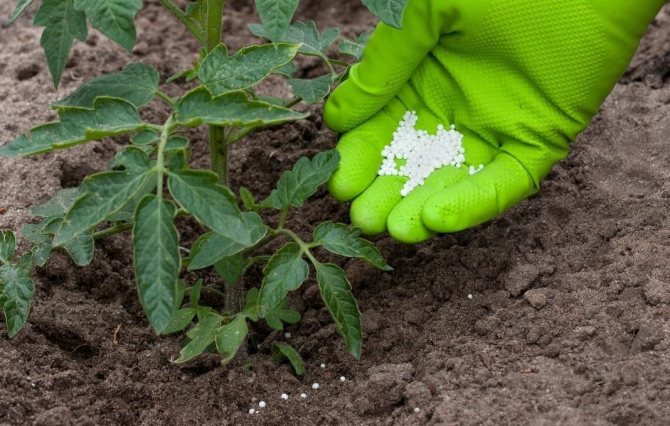

The first feeding is done a week after planting the seedlings. For this purpose, use the following solution - take 30 g of superphosphate per 10-liter bucket. Phosphorus will help strengthen the root system.
The next fertilization is carried out after 10 days. The following solution is made for dressing - 30 g of potassium sulfate are diluted in 10 liters of liquid. During the flowering period, foliar dressing is carried out to obtain a good harvest. Experts advise to spray the bushes with a solution of boric acid (1 g of the substance is taken per 1 liter). It is good to take organic matter for feeding - rotted manure (bird droppings) or an ash solution.
Grasshopping and bush formation
Tomato Nastenka belongs to a low-growing variety, so it should not be pinned. The bush forms 3-4 stems. When the bushes grow, it is advisable to tie them to hammered pegs to protect them from wind and rain. This will make it easier to care for the plant and prevent the fruits from falling to the ground.
Read more on how to pinch tomatoes correctly in the open field and in the greenhouse.
Loosening the soil and weeding
After watering or rain, the soil must be loosened. This will improve the flow of moisture, nutrients and oxygen to the plant. Grown bushes during loosening does not interfere with slightly hilling. This procedure will promote the growth and strengthening of the root system. During loosening, it is also necessary to remove weeds, which draws moisture and useful elements from the soil. If desired, the beds with tomatoes can be mulched.
Landing
If you want to get a good tomato harvest, it is important not only to properly grow tomato seedlings, but also to plant them correctly. To do this, in accordance with the planting scheme, holes are organized, which must be filled with a mixture of ash (200-250 ml), soil and superphosphate (15 mg).
After that, the holes are watered with water, a sprout is placed in the center. The hole is covered with soil, trying to deepen the seedlings as much as possible.
To prevent moisture from evaporating too quickly and the weeds not to grow so actively, mulching is recommended.
Diseases and pests and their prevention
The tomato variety Nastenka is resistant to the mosaic virus and late blight, but in case of violation of agricultural technology or unfavorable external conditions, the disease can manifest itself. To combat and prevent the appearance of many fungal diseases, treatments are used with Bordeaux liquid.
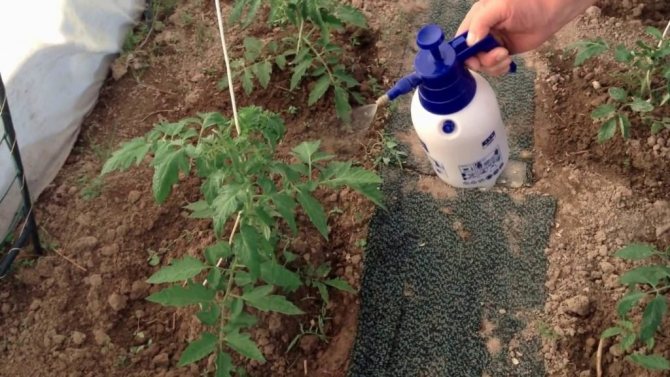

In addition, tomatoes can be susceptible to infestations of insect pests such as spider mites, scoops and whiteflies. Chemicals such as "Decis" and "Aktara" are used against such insects. As a preventive measure, it is necessary to observe crop rotation, disinfect seeds, carry out the autumn digging of the beds, and also be sure to inspect the plantings to identify the first signs of diseases or pests.
Pros and cons of tomato
The variety attracted the attention of vegetable growers for its ability to grow in a temperate climate, ease of care, early harvest. Tomato Nastenka takes root in Siberia, bears fruit in the Far East, where it is planted in a greenhouse. Subject to agricultural technology, the Nastenka variety gives a good harvest.


The advantages of tomato include:
- prolonged fruiting;
- disease resistance;
- versatility of use.
Vegetable growers appreciate tomatoes for their pleasant sweet taste. During transportation, tomatoes do not lose their presentation, but with an excess of moisture, the skin cracks.
Harvesting and storage
Tomatoes for human consumption must be picked when ripe. But for longer storage, the fruits are harvested at the stage of blanche maturity. Store fully ripe tomatoes for no more than 3 days. For longer storage, the fruits should be sorted out and sorted out damaged specimens.
Did you know? Tomatoes contain serotonin ("the hormone of happiness") and thiamine, which is converted into it already in the body of a person who has eaten the tomato fruit. It helps fight stress and depression. It is believed that pink tomatoes are most useful for nerves.
If you keep the stalk, the storage time will increase. For convenience, vegetables should be stored in wooden boxes, which are covered with soft material. The storage area should be dark, dry and well ventilated. The recommended temperature is no more than + 23 ° С, humidity is within 83–85%. Tomato variety Nastenka will provide summer residents and gardeners with delicious red-pink fruits of universal use for a long period.
Reviews of gardeners who planted
Below are the reviews of gardeners who grew the tomato variety Nastenka. From them, you can determine the advantages and disadvantages of the variety in order to draw the right conclusions.
Irina Alexandrovna, Saratov region
Lyubov Vasilievna, Lipetsk region
Alla Anatolyevna, Kostroma region
Anatoly Ilyich, Vologda region
Daria Kirillovna, Kursk region
Valentin Alekseevich, Belgorod region
Victor Veniaminovich, Murmansk region
Kristina Anatolyevna, Kirov region
Tomato Nastenka belongs to a variety that is easy to care for, but growing requires certain skills, especially during the growth of seedlings. The variety has earned the attention of consumers and gardeners due to its excellent taste, shelf life and ease of cultivation (in the case when the vegetable is not grown for the first time).
A company called "Siberian Garden" has proven itself well in the domestic market of planting materials. The Novosibirsk agrofirm offers a wide range of vegetable, herb and flower seeds. All varieties of agricultural firms tolerate sudden drops in temperatures and a small amount of daylight hours well.
The priority was the production of quality planting material. It is believed that the fruits grown on the Siberian experimental fields will give the highest quality seeds, will show resistance to diseases and difficult climatic conditions. The company regularly releases new items.
All tomato seeds of the Siberian Garden undergo a thorough double control.For the first time, they are checked for quality in the company's own laboratories. The second inspection of tomato seeds is passed by the State Seed Inspection of the Russian Federation. It must be said that the process of obtaining seeds is quite painstaking and laborious.
Indeed, from 1 kg of tomato, only 2-2.5 grams of tomato seeds are obtained. Forgotten varieties of Siberian selection are restored here and completely new varieties of tomatoes are developed. All of them are in demand not only in regions such as Kamchatka, Siberia, the Urals, Central Russia and Kaliningrad. They have been supplied to neighboring countries for a long time - Kazakhstan, Ukraine, Belarus. In Germany and Sweden, Russian seeds are also planted in order to guarantee a stable and high-quality harvest.
Agro provides a wide selection of tomato seeds - about seventy varieties. Among them there are both "old", long-known varieties, and those that are just beginning their journey to the garden beds. What reviews about Siberian Garden tomatoes can be read on the Internet, what varieties of the Novosibirsk agricultural company have already earned a good reputation and are in demand?
Quite good reviews of tomato The pride of Siberia can be seen by visiting any site on the "tomato theme". They indicate the following advantages of the variety: early maturity, yield, large-fruited. Indeed, the variety begins to bear fruit in a short time - 85-100 days. Providing tomatoes with proper care, you can get from four to five kilograms from one bush.
The fruits grow round-flattened, colored in a scarlet shade, weighing from 750 to 950 grams each. Inside, they contain juicy pulp, divided into six chambers. Pride of Siberia tomatoes are perfect for making fresh vegetable salads. They are hardly suitable for canning, since they are very large-fruited. You can read more about Siberian early ripening tomato here.
Tomato Tea Rose
Grateful reviews about the tomato Tea Rose Siberian Garden indicate that the variety is unusually versatile. This applies to growing conditions: the unpretentious variety shows yields in almost any region when grown under cover. Also, its multifunctionality is manifested in the methods of processing fruits.
Fresh tomatoes are unusually tasty and sweet, suitable for making any dishes with their participation. In conservation, they can be salted, pickled, processed into juice and tomato paste. In terms of ripening, such a tomato belongs to the early varieties, since the growing season does not exceed 100-105 days.
The variety is indeterminate, the height of the bush reaches two meters. Each plant is capable of producing a good harvest - 6 kg per plant. Tomatoes ripen on clusters of 4-6 pieces. The fruit is large enough - 200-400 grams, pinkish-red, round in shape, ribbed near the "tail". The pulp is tender, juicy, sugary, not watery, not "bony".
Nevertheless, those who at least once tried to grow Siberian Apple on their own garden did not remain indifferent to this variety. And this is not surprising, because he has already managed to prove himself from the best side. It turned out to be extremely resistant to diseases, produced high yield rates - about 9 kilograms per 1 sq. m, and also showed extraordinary resistance to transportation.
The variety belongs to the hybrids of mid-season yield. The growing season takes 115 days. The plant is not standard, indeterminate, and its height is from 1.5 to 1.9 meters. Sometimes the bush reaches a higher growth of 2-2.5 meters. Of course, such tall stems need a garter.
The fruits are weighty, shaped like an apple, pink in color. The crust is smooth, glossy, creating a pearlescent effect. The tomato pulp is dense, fleshy, divided into 4-6 sections. The taste is sweet due to the increased sugar content of the fruit.
Tomato Tsifomandra
Increasingly, you can hear reviews about the tomato Tsifomandra Siberian Garden, as a medium-early, productive variety with massive fruits of an unusually beautiful color. One tomato weighs about 800 grams and is similar in color to raspberries. At the same time, the tomato of Tsifromandra is not at all a tall plant: its stems rarely exceed the one meter mark.
The few reviews about the tomato Nastya Sibiryachka still help to form an impression about this variety. They say that a tomato with an average period of fruit production will give a good harvest of vegetables of an average weight (about 200 grams each). Their appearance resembles small barrels, and the raspberry red color makes them extremely attractive.
The bushes are strong, "stocky" and squat, they are literally strewn with tomato-barrels. This "small size" of the plant allows you to save garden space. Another plus of the variety is that it does not need to be formed by removing stepsons. The fruits of the variety are best eaten fresh or made into tomato juice.
Tomato Lazy
The official tomato Lazyanka Siberian Garden was registered in 2010. It was then that gardeners first learned about a Siberian selection that combines two important characteristics: yield and unpretentious care. Few varieties of tomatoes can boast of such a wide geography of cultivation as the "Lazy" has.
The variety is early, forms fruits within 85-90 days from the time the first leaves of the plant appear. Determinate bush, standard, grows in height up to 60 centimeters. But, despite his small growth, he needs a strong support. After all, one tomato weighs 300-400 grams, and the total tomato mass from 1 sq.
m can reach 15 kilograms. Beautiful fruits of juicy crimson color, heart-shaped, contain 4-5 chambers. They can be used for any recipe. Its commercial qualities are also good: the fruit is very stable, has a very attractive appearance, good ripening rates, and can withstand long-distance travel.
This variety has more positive aspects than negative ones. But still, it should be remembered that the variety does not tolerate hot weather very well, is picky about the composition of the soil, and must be well attached to the support.
Of interest are also the reviews about the tomato Pearl of Siberia - one of the most "young representatives" of Siberian selection. The variety is medium early, the growing season lasts about 115 days, intended for greenhouse cultivation. The bush is indeterminate, with a height of 1.5 m. The tomatoes are elongated, cylindrical, bright scarlet in color, weighing up to 120 grams, tied in brushes of 8 pieces. Such fruits are universal in use and remain fresh for a long time, suitable for long-term transportation.
Commendable reviews of the Siberian giant tomato allow us to conclude that there is no better variety for a greenhouse. In terms of ripening, the Siberian giant belongs to the mid-season varieties. By type of growth - indeterminate, tall. For such a tall bush, you will need a rather large greenhouse, because on average its growth is 2 meters.
The fruits are also large in size: one tomato weighs 400-600 grams, in some cases the gardeners managed to grow kilogram giants. The shape of the tomato is round, flattened, the color is bright red. The taste of tomatoes is excellent. Juicy, fleshy, aromatic pulp is suitable for any dish.
Tomato Sibiryak F1
Tomato Sibiryak F1 of late maturity can also boast of no less large fruits. The growing season lasts from 130 to 140 days. The variety is indeterminate, designed for cultivation in a greenhouse covered with glass or polyethylene. A prerequisite for leaving is the garter of the stems. One tomato weighs 400-600 grams, but there were times when it was possible to grow a specimen weighing about 2.8 kg.The shape of the vegetable is flat-round, without pronounced ribbing. The taste is excellent.
Tomato Taras Bulba
Mid-season tomato Taras Bulba Siberian Garden is popular among lovers of large-fruited varieties. The plant is distinguished by the height of the bush. The time from the first shoots of seedlings to the receipt of fruits takes 111-115 days. Round-heart-shaped tomatoes, weighing 200-300 grams, are painted in a bright scarlet color. By design, the fruits of the variety are salad, so it is best to eat them fresh. The taste of tomatoes is rich, sweet and juicy.
It is noteworthy that the well-known Volovye Heart tomato has many similar features - the description of the variety and the characteristics of which are very similar to the tomato Taras Bulba. Indeterminate, tall plant, medium ripening time, fruits are large, heart-shaped, crimson-pink.
The hybrid Siberian tomato abundant will form a harvest in a short time (90-95 days), since it belongs to the group of early-ripening varieties. A carp variety forming bunches of 8-10 fruits. Cylindrical tomatoes, raspberry-red, weighing 100-200 grams, will delight lovers of vegetable dishes with excellent taste. The plant is large - the length of the shoots reaches 1.7-1.8 meters, so it must be attached to the support and cut off the stepsons.


